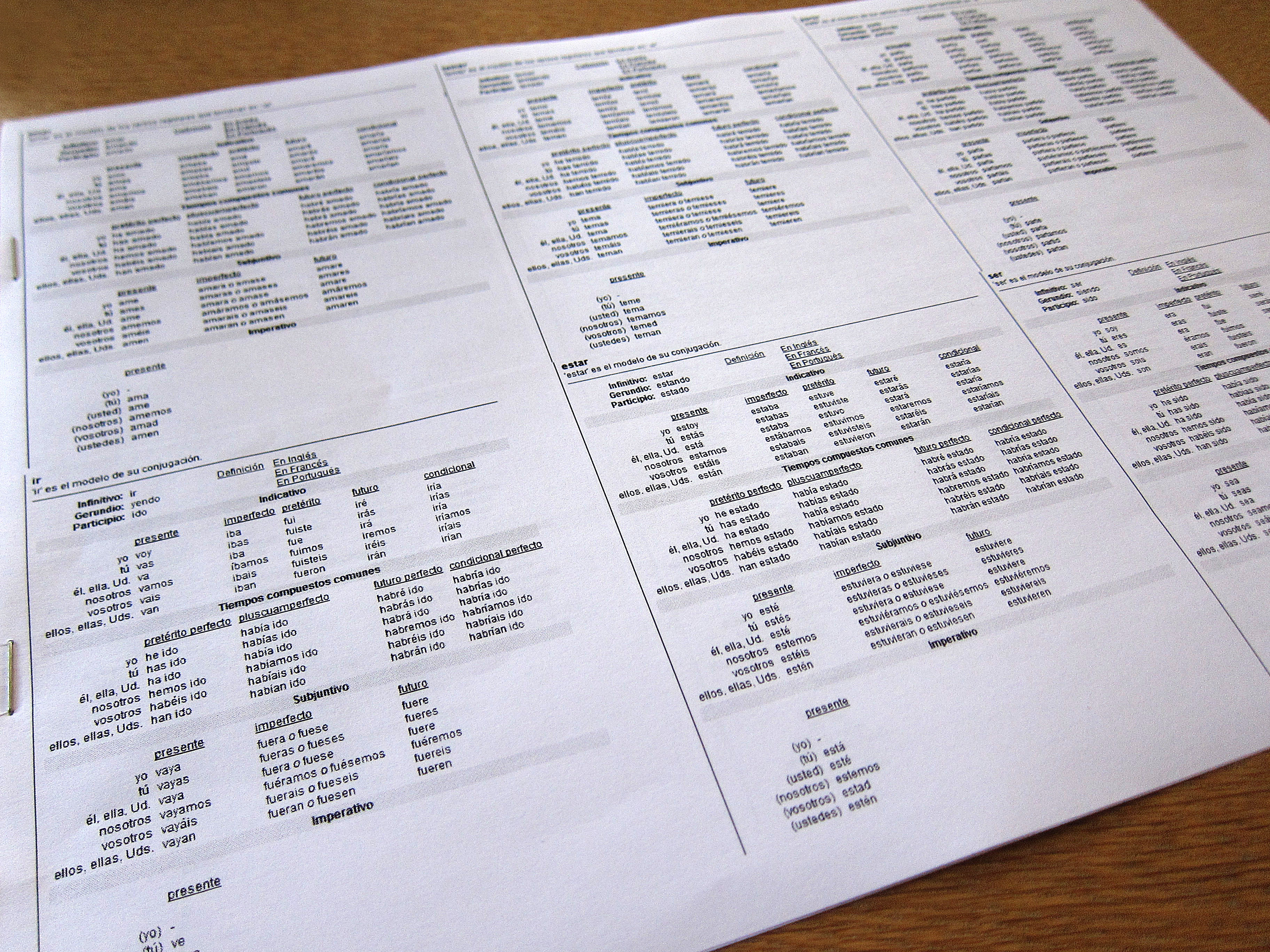One of the many confusing hurdles about the Spanish language is that it has certain rules that are often not clear when described to native English speakers since no equivalent exists. A good example of this would be the two different forms of the past tense, the preterite and the imperfect. While it is unfortunate that you will need to memorize an extra set of verb endings, the rules for when you use each one are not too terribly complicated.
There are several different rules for using preterite versus imperfect Spanish tenses. The main rule covered here involves the time frame involved.
When to Use the Spanish Preterite and Imperfect Tenses
1. Preterite (Pretérito)
The preterite tense is used when the action in the past was finite, happened only once, and/or had a specific ending time.
Usage examples:
Viví en Argentina por 2 años. (I lived in Argentina for 2 years.)
The reason you use “viví” (preterite) instead of “vivía” (imperfect) is because the specific time period of 2 years marks an ending point.
Fui a Nueva York. (I went to New York.)
In this case, you are referring to a specific trip. You went to New York that one time, not habitually.
2. Imperfect (Imperfecto)
The imperfect is used for continuous or habitual actions in the past. I am going to use the previous examples and show when you might use the imperfect instead of the preterite.
Usage examples:
Durante mi niñez, vivía en Argentina. (During my childhood, I lived in Argentina.)
In this case, the key phrase is “durante mi niñez,” which means you are referring to your entire childhood. You lived in Argentina for your entire childhood, not a set amount of time.
Siempre iba a Nueva York. (I always used to go to New York)
Once again, you have a key word “siempre” which means “always” that lets you know that this was a habitual action, not just a single trip, thus calls for the imperfect.
3. Combination Sentences
Some sentences will require both past tense forms. This happens in story-telling situations, as you are often describing an action to set a scene (imperfect) and then something happens to interrupt it (preterite).
Usage examples:
Estaba cenando cuando mi amigo llegó. (I was eating dinner when my friend arrived.
In this case, the eating action was continuous because it is part of the scene setting of the story, while the arrival was sudden, interrupted the continuous action and occurred at a finite time.
4. Regular Verbs Conjugations
Preterite
| Verbs ending with -ir or -er (Example verb: correr) |
Verbs ending with -ar (Example verb: caminar) |
|
| Yo | -í (corrí) | -é (caminé) |
| Tú | -iste (corriste) | -aste (caminaste) |
| Él/ella/usted | -ió (corrió) | -ó (caminó) |
| Nosotros | -imos (corrimos) | -amos (caminamos) |
| Ellos/Ellas/Ustedes | -ieron (corrieron) | -aron (caminaron) |
Imperfect
| Verbs ending with -ir or -er (Example verb: correr) |
Verbs ending with -ar (Example verb: caminar) |
|
| Yo | -ía (corría) | -aba (caminaba) |
| Tú | -ías (corrías) | -abas (caminabas) |
| Él/ella/usted | -ía (corría) | -aba (caminaba) |
| Nosotros | -íamos (corríamos) | -ábamos (caminábamos) |
| Ellos/Ellas/Ustedes | -ían (corrían) | -aban (caminaban) |
If you find this information on Spanish preterite and imperfect tenses useful, please share it with a friend.
Check out these other articles to help you Learn Spanish.
Featured photo credit: That time of year Project 365(2) Day 126 by Keith Williamson via flickr
